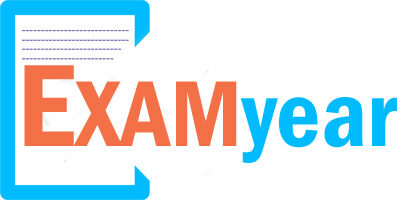Periodontology MCQ
Periodontology MCQ paper for the written examination is given below. Candidates who are looking for Periodontology exam MCQ paper can find in this section. The applied candidates who are getting prepared for the Periodontology can view this page for the Periodontology Last Ten Years MCQ Papers.

Download the Periodontology MCQ & Solutions & make it as a reference for your exam preparation. Take advantage of these Periodontology MCQ Papers in a proper manner to get qualifying Marks. Last 5 years Periodontology MCQ Papers provided here. Candidates who are applied for the above exam can check and download the Periodontology MCQ Papers from here.
MCQs on Periodontology
1. The following immunoglobulin is present on naive B cells
(a) IgD
(b) IgB
(c) Both
(d) none
2. The following bacteria invade the host tissues
(a) Tanerella forsythia
(b) Campylobacter
(c) Streptococcus
(d) Fusobacterium nucleatum
3. Actinomyces viscosus attaches to
(a) saliva coated surfaces
(b) pre-existing plaque
(c) epithelial cells
(d) connective tissue components
4. Which micro-organism inhibits IL-8 production by epithelial cells
(a) Actinomycetemcomitans
(b) Gingivalis
(c) Forsythia
(d) Capnocyt ophaga sp.
5. Campylobacter Rectus releases the following enzyme to mediate host tissue destruction
(a) Collagenase
(b) phospholipase A
(c) trypsin like enzyme
(d) arysulfatase
6. Poorly responding sites demonstrate higher levels of
(a) Micros
(b) Actinomycetemcomitans
(c) Gingivalis
(d) Denticola
7. In patients with diabetes the immune function is affected as follows-
(a) altered phagocytosis
(b) defective IgA
(c) both of the above
(d) none of the above
8. The gingival disease during pregnancy presents
(a) smooth and shiny
(b) raspberry like surface
(c) tumor like
(d) all of the above
9. Brown tumors are seen in
(a) Pagets disease
(b) ibrous dysplasia
(c) Hyperparathyroidism
(d) hyperthyroidism
10. Highest incidence of leukemic gingival enlargement occurs in
(a) acute monocytic leukemia
(b) acute myelocytic leukemia
(c) acute lymphocytic leukemia
(d) acute myelocytic – monocytic leukemia
11. Papillon lefevre syndrome is an inherited disorder with following pattern
(a) autosomal dominant
(b) autosomal recessive
(c) X-linked
(d) Y-linked
12. Benefit of electronic data record are
(a) steep learning curve
(b) generate the best evidence from patient data
(c) separation of patient information across multiple screens
(d) limited support for communication among dental team m embers
13. The main antigen processing and presentation (APCs) cells are
(a) Neutrophils
(b) Platelets
(c) Peripheral dendritic cells
(d) Eosinophils
14. Bacterial communication within biofilm is known as
(a) Corncob formations
(b) Coaggregation
(c) Quorum sensing
(d) Translocation
15. Increases in steroid hormones are associated with significant increases in
(a) Actinomyces viscosus
(b) Prevotella intermedia
(c) Streptococcus sanguis
(d) Campylobacter rectus
16. Bacterial resistance to antimicrobial agents in biofilm is
(a) Less than the planktonic state
(b) Same as the planktonic state
(c) Double as the planktonic state
(d) 000 times more than the planktonic state
17. Apnea hypopnea index (AHI) is considered to be normal if
(a) AHI 5-15
(b) AHI 15-3 0
(c) AHI < 5
(d) AHI > 3 0
18. The goal of host modulation therapy for periodontal disease is to
(a) Treat the underlying systemic disease
(b) Enhance the response to therapy and achieve periodontal stability
(c) Treat the periodontal disease
(d) None of the above
19. Bladelike, pins, Disklike, cylindrical are types of
(a) Subperiosteal implants
(b) Basal implants
(c) Transmandibular implants
(d) Endosseous implants
20. Micromovements exceeding ______ at the implant bone interface interfere with bone formation
(a) 150 microns
(b) 250 microns
(c) 125 microns
(d) 225 microns
21. Critical temperature for bone is
(a) 57 degree C
(b) 67 degree C
(c) 47 degree C
(d) 77 degree C
22. While placing multiple implants the distance between adjacent implants should be a minimum of –
(a) 4 mm
(b) 3 mm
(c) 1.5 mm
(d) 1 mm
23. What is bone tapping?
(a) flaring crestal aspect of osteotomy
(b) flaring apical aspect of osteotomy
(c) creating threads in osteotomy
(d) osseodensification
24. Ledge and wedge technique is used for management of
(a) Gingival enlargements
(b) Gingival Abscess
(c) Furcation involvement
(d) Periodontal Pocket
25. Modified Widman flap was given by
(a) Morris 1965
(b) Morris 1974
(c) Ramfjord and Nissle 1965
(d) Ramfjord and Nissle 1974
26. Pocket wall is removed surgically by
(a) external bevel excision
(b) internal bevel gingivectomy
(c) undisplaced flap
(d) all of the above
27. _____ is a example of bacteriostatic antibiotic
(a) Amoxicillin
(b) Tetracycline
(c) metronidazole
(d) Ciprofloxacin
28. In a systemically healthy patient with periodontal abscess, the following antibiotics are prescribed ?
(a) Amoxicilin
(b) Amoxicillin + metronidazole
(c) Doxycycline
(d) Not recommended
29. The calcium phosphate ratio in hydroxyapatite is
(a) 1.67
(b) 1.57
(c) 1.47
(d) 1.37
30. The following drug induced gingival enlargements are dose related
(a) Phenytoin
(b) Cyclosporine
(c) Nifedipine
(d) Amlodipine
31. Which is NOT a feature of Acute necrotizing ulcerative periodontitis
(a) punched out craters
(b) fetid odour
(c) periodontal pockets
(d) Fever
32. The following acute gingival disease is contagious
(a) Primary herpetic gingivostomatitis
(b) Acute necrotizing gingivitis
(c) Cancrumoris
(d) None of the above
33. Intraepithelial clefting is seen in
(a) Pemphigoid
(b) Pemphigus
(c) Epidermolysis Bullosa
(d) Lichen Planus
34. What does exudation through sulcus signify:
(a) inactive phase of destruction
(b) deep pocket
(c) type of inflammation
(d) all of the above
35. The length of the junctional epithelium at the base of the pocket
(a) decreases to 50 – 100 microns
(b) decreases to 100 – 200 microns
(c) increases by 50- 100 microns
(d) increases by 100 – 200 microns
36. Interproximally the inflammation spreads first from gingiva to
(a) periodontal ligament
(b) alveolar bone
(c) periosteum
(d) dentogingival unit
37. The radius of action was described by
(a) Carranza
(b) Lindhe
(c) Waerhaug
(d) Page and Schroeder
38. Bone loss in patients with untreated periodontal disease averages
(a) 0.5 to 1mm
(b) 1 to 2mm
(c) 0.2 to 0.3 mm
(d) 2 to 3 mm
39. Which of the following is a sign of trauma of occlusion?
(a) Periodontal Pocket
(b) Angular bony defect
(c) Stillman’s cleft
(d) Gingival recess ion
40. Whose blood supply is NOT affected by trauma from occlusion?
(a) periodontal ligament
(b) alveolar bone
(c) gingiva
(d) none of the above
41. Following periodontal therapy, the pathologically migrated teeth
(a) remain in the same position
(b) always return to the original position
(c) get pulled to the side of more destruction
(d) get pulled to the side of less destruction
42. The rate of bone loss in Localized Aggressive Periodontitis is
(a) 2-3 times faster than chronic periodontitis
(b) 3-4 times faster than chronic periodontitis
(c) 1.5 to 2.5 times faster than chronic periodontitis
(d) varies from individual to individual
43. The percentage of Magnesium whitlockite in calculus:
(a) 21%
(b) 12%
(c) 9%
(d) 58%
44. The composition of subgingival calculus differs from supragingival calculus:
(a) brushite is higher in subgingival calculus
(b) brushite is lower in subgingival calculus
(c) same in both
(d) differs from patient to patient
45. The following enzymes initiate calcification
(a) Hydrolase
(b) Transferase
(c) Esterase
(d) oxidoreductase
46. Calculus formation may begin as early as
(a) 1 hour
(b) 2 hours
(c) 3 hours
(d) 4 hours
47. The role of monocytes is
(a) to differentiate into macrophages
(b) antigen processing
(c) phagocytosis
(d) all of the above
48. The natural killer cells originate from
(a) lymphoid arm
(b) myeloid arm
(c) peripheral lymph nodes
(d) thymus
49. The central component of complement system is
(a) C1
(b) C2
(c) C3
(d) C5
50. The MHC is located on
(a) chromosome 12
(b) chromosome 6
(c) Chromosome 1 6
(d) chromosome 21



